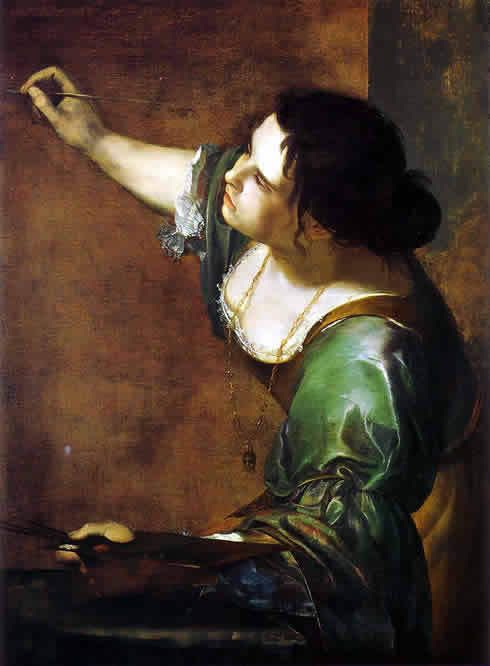In Mary Garrard’s essay Artemisia Gentileschi’s Self-Portrait as the Allegory of Painting she writes about the class status of an artist, particularly a painter, during the Renaissance rivaled that of a laborer “by the association with manual arts” (Garrard, 101). Garrard goes on to explain how Gentileschi’s painting entitled Self-Portrait as the Allegory of Painting or La Pittura is a “sophisticated commentary upon a central philosophical issue of later Renaissance art theory, indicating an identification with her profession on a plane of greater self-awareness, intellectually and culturally, then has previously been acknowledged” (97). Another work that attempts to make this same statement is that of Diego Velazquez entitled Las Meninas. Both Gentileschi and Velazquez’s works strive to raise the class status of artists.
In La Pittura Gentileschi paints a self-portrait, one that represents her as the “allegory of painting” itself. By doing so she is representing herself as much more than just a painter, she has become more than just a mortal human being! She also shows herself as an artist at work, but she “working” in a beautiful gown, with a gold locket. These are clothes that an upper-class person would wear, not a low-class laborer on while they’re “on the job.” This suggests that she, as an artist and while being an artist (in the process of using her hands) is most decidedly upper class.

In Velazquez’s work he is conveying that very same concept of the artist as “upper-class.” Like Gentileschi, he has painted himself into his work, but he has placed himself in a court scene, surrounded by expensive and upper-class objects and people. He even puts the King and the Queen (their reflections are in the mirror behind him) into the very same painting in which he has put himself! This is an obvious allusion to his status as upper class.

While the two works seek to raise their audiences’ opinions on artists they differ in how they want their audiences to see them personally. Gentileschi wants to be thought of as a great and skilled painter who deserves respect. Velazquez seems to want to be seen as a man of great importance, who is right at home in the company of kings and queens.
Whatever the deeper meanings behind the paintings, the messages are still the same. Not all people that work with their hands are of low-class stature. Both Gentileschi and Velazquez strive to raise their status through self-portraiture in their artwork.
Copyright Megan Tharpe 2003

